ON a promontory that runs down to the Ionian Sea almost at the southermost point of Italy, Locrians from Greece founded in the early seventh century B. C. a colony to which they gave the name of Locri Epizephyrii. The hills above this promontory bear witness today to the struggle which the colonists were forced to carry on both against hostile natives to the north and against the great natural difficulties of the site, for on their steep slopes remain the traces of forts, of skillfully constructed supporting walls inserted under heavy masses of rock which apparently threatened to break loose from the mountain-side and of retaining walls which kept the soil from washing down the hill and confined the mountain torrents to their courses.
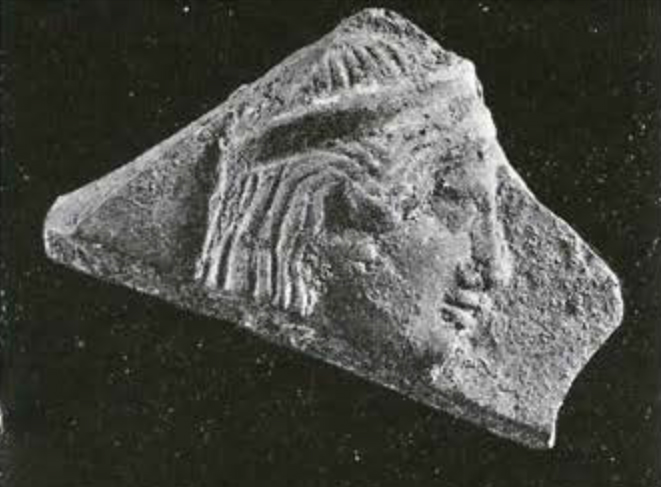
Image Number: 3392
Some fifty years ago, apparently washed to the surface by rains, there began to appear in a narrow space between two of these old walls fragments of very beautiful terracotta plaques or pinakes ornamented with reliefs in the best Greek style. A few of them found their way into the market for antiquities and more were collected by a citizen named Candida. The government shortly afterward intervened and the great scholar, the late Paolo Orsi, assisted by Quagliati, carried on excavations with truly astonishing results. They discovered a small shrine of Persephone and a deposit of discarded offerings which yielded thousands of fragments of terracotta plaques. In the work-rooms of the new Museum at Reggio may be seen table after table covered with fragments of these lovely little reliefs, and in the Syracuse Museum is a still richer collection. Those assembled by Candida were acquired by the government so that outside Italy very few of these plaques exist. The British Museum possesses a small group most of which were once in the Castellani collection and presumably assembled in a still earlier period. There are several small collections in Germany, but these are notable exceptions. The Museum counts itself exceedingly fortunate, accordingly, to have acquired recently fragments of five Locrian plaques from the collection of the late S. Hudson Chapman who purchased them in 1900.
Of the masses of fragments in Reggio and Syracuse two preliminary accounts have been published, one in Ausonia, 1908, by Quagliati, and one in the Bolletino d’Arte, 1909, by Orsi. A detailed study of one of the two types has been published by Signora Zancani-Montuoro in a volume dedicated to Paolo Orsi and the study of a second type is now in press. To her has been entrusted the task of publishing the thousands of fragments in Reggio and Syracuse, and until her Corpus appears the final identification of all of our fragments cannot be made.
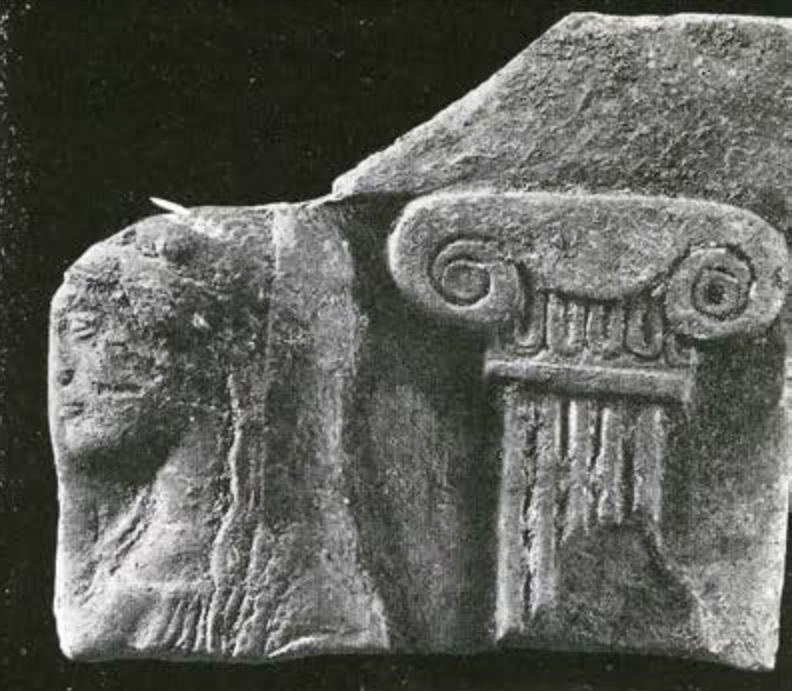
Museum Object Number: 39-26-2
Image Number: 3393
Locrian plaques are generally rectangular with one or two holes for suspension, and with sides which vary from twenty to thirty centimeters in length. The reliefs were achieved by pressing a matrix into the clay while soft and the surface was then covered with a white coating of lime which rendered the clay less porous, and kept the colors pure. For colors were used in abundance, blue for the backgrounds, red for the flesh of men and the hair of women. The flesh of women was left white. Yellow and green were sparingly used, gold never.
The subjects of the reliefs as might be expected of offerings made in a shrine of Persephone are chiefly concerned with the lower world. We see the departure of the deceased for the world below, and the most famous departure, the rape of Persephone; we see Hades and Persephone on their thrones, Hermes, the conductor of souls, and the life of the dead in the world beyond the grave. One hundred and sixty types have now been identified by Signora Zancani-Montuoro.
Let us look at our smaller fragments first. The head in Plate VIII (a) is like that of Persephone on a plaque published in Bolletino d’Arte, p. 413, where she is depicted on her throne receiving the gifts of worshippers. Her hair on which clear traces of red remain is bound with a broad fillet. In her ear is a large earring in the form of a rosette. The fragment in Plate VIII (d) comes from one of the loveliest of the Locrian reliefs depicting the joys of the blessed in the world below. In the center is a tree laden with fruit which a maiden on the left is picking. On the right is a seated maiden with both hands extended. Our head repeats the type of this figure. She wears no himation over her sheer chiton but we can see from a fragment of this mould published in Ausonia, p. 222, that its end lies across her knees. For the identification of the fragment in Plate VIII (b) we must await the publication of the fragments in Italy. The Ionic column evidently represents a shrine.
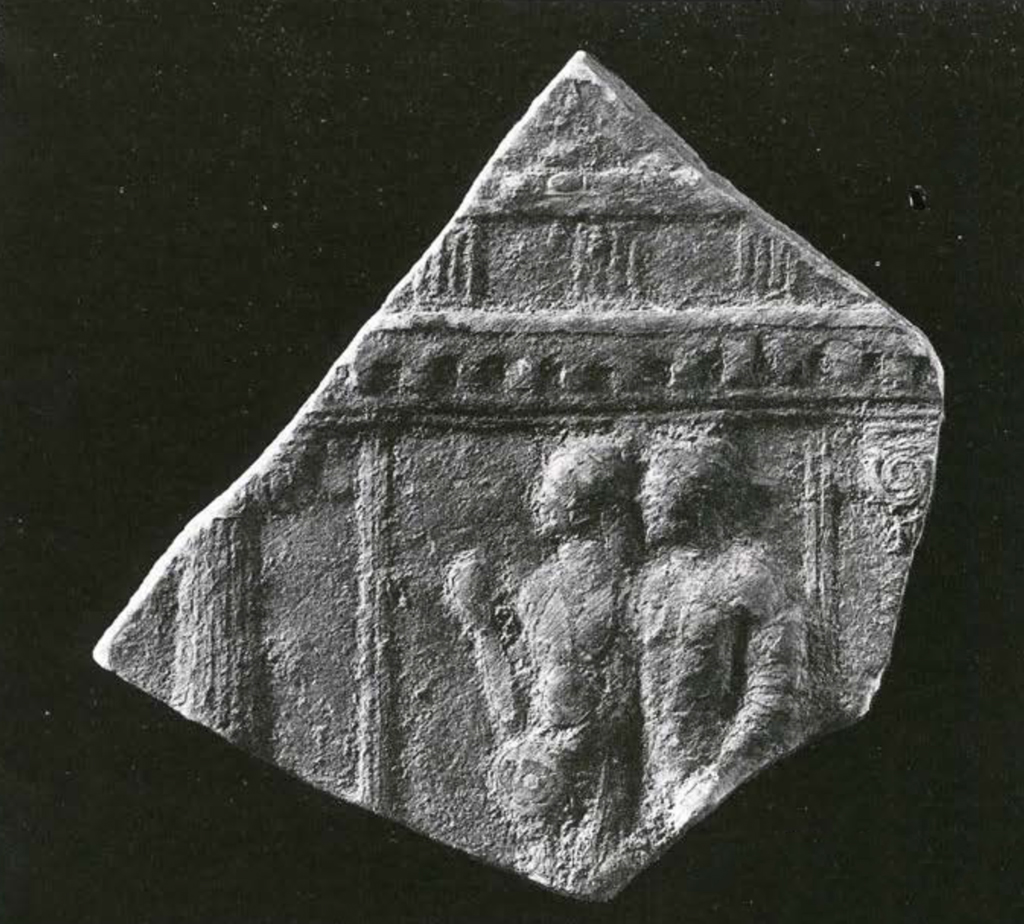
Museum Object Number: 39-26-3
Image Number: 3394
A more complete architectural setting is shown in Plate VIII (c), the raking cornice of which can be supplied by the fragment in Ausonia, p. 228. It is interesting to note the mixture of the Doric and Ionic orders in this shrine for which other evidence exists in the architecture of Magna Graecia. Signora Zancani-Montuoro writes me that she has in press an article for the Rivista dell’ Istituto di Archaeologia e Storia dell’ Arte in which she discusses the type of plaque to which this fragment belongs, but that she had been unable to restore the center of the scene until she saw a photograph of our fragment, which shows for the first time the two deities to whom the shrine belonged.
Another important piece in our new acquisition is the plaque shown in Plate IX and strangely enough, this is the plaque which has been painstakingly restored by Signora Zancani-Montuoro from some twenty fragments, some of which are in Germany, some in Italy. Our relief is the most nearly complete impression which has been preserved; only the lower part of Persephone’s throne, the feet of the three figures and the upper part of the armed figure on the right are missing. The surface moreover is well preserved with many patches of the white coating of lime with which the relief was covered, and some traces of color, a rosy red on the hand and the thighs of the warrior and again on Persephone’s hair.
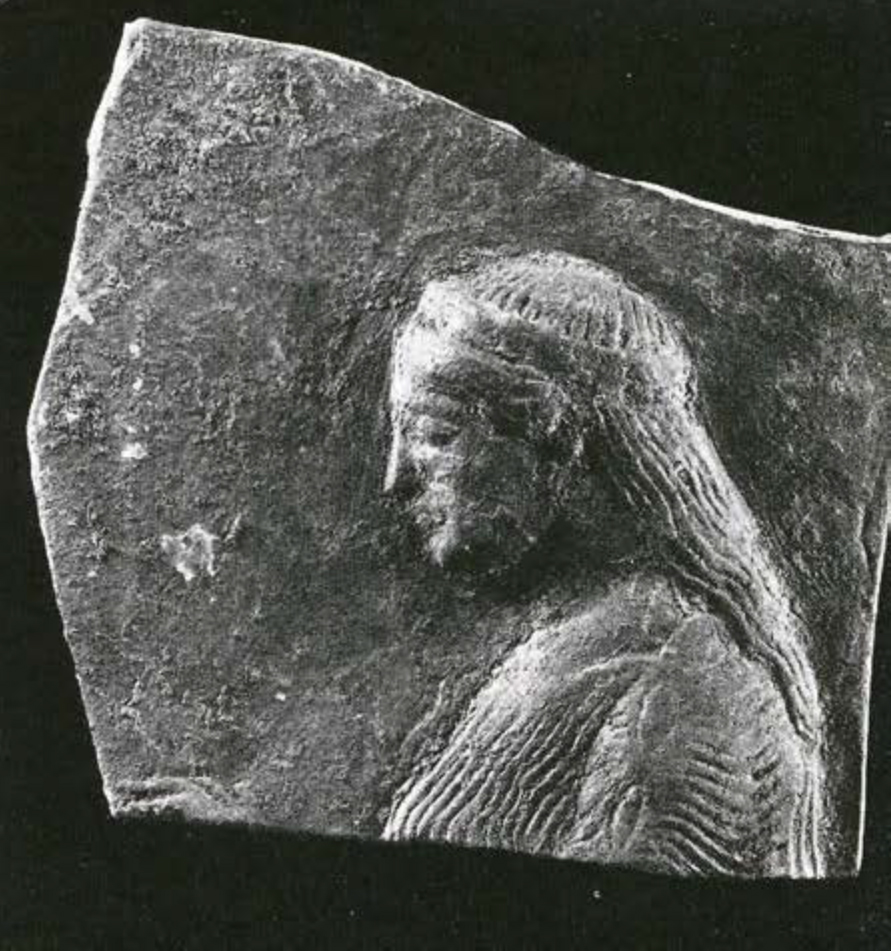
Museum Object Number: 39-26-4
Image Number: 3395
The goddess is seated on a cushioned chair. In her right hand she holds a phiale; Signora Zancani-Montuoro has suggested that the beautiful palmette crowned with lotus blossoms which the goddess seems to hold in her left hand may have been a ritual object of metal, probably an incense burner and this view is supported by the fact that throughout these Locrian reliefs, conventionalized flowers are lacking. The armed figure holds in his right hand a cock, a chthonic emblem. Now the cock often appears as the blazon on the shield of Ares, and there is some evidence to show that Ares was regarded as a god of justice as well as a god of war, for instance in the eighth Homeric hymn he is addressed as “Co-defender together with Themis” who was the goddess of Justice. Signora Zancani-Montuoro suggests accordingly that he appears here as a sponsor for the mortal who has just entered the realm of the dead and stands for judgment before Persephone’s throne. The left hand of this maiden is raised but wrapped in her mantle, the typical attitude for a suppliant. And what is the object held in her right hand? Not a round oil-jug and not a pomegranate because in other pictures on Locrian plaques, it is held in the palm of the hand and is clearly round. The dots with which it is covered need not be taken too seriously for we see the same dots on the border of Ares’ shield and moreover in another version of this scene made from a slightly different mould the round object is covered not with dots but with interlacing bands. Signora Zancani-Montuoro ventures the suggestion that we have here a representation of the cosmic sphere which played an important role in Orphic ritual and theology. Orphic doctrine held that all life came from the cosmic egg and Macrobius states that the egg was venerated because it was held to be a mundi simulacrum. Among the offerings found with the plaques at Locri were large clay eggs almost spherical, which had been offered at Persephone’s shrine. We could wish that the object represented on our plaque were a little less round and a little more oval, but whether or no our suppliant presents the symbol of Orphic ritual her position beneath the protecting arm of Ares and her modest mien as she stands before Persephone’s throne suggest a scene of judgment.
E. H. D.
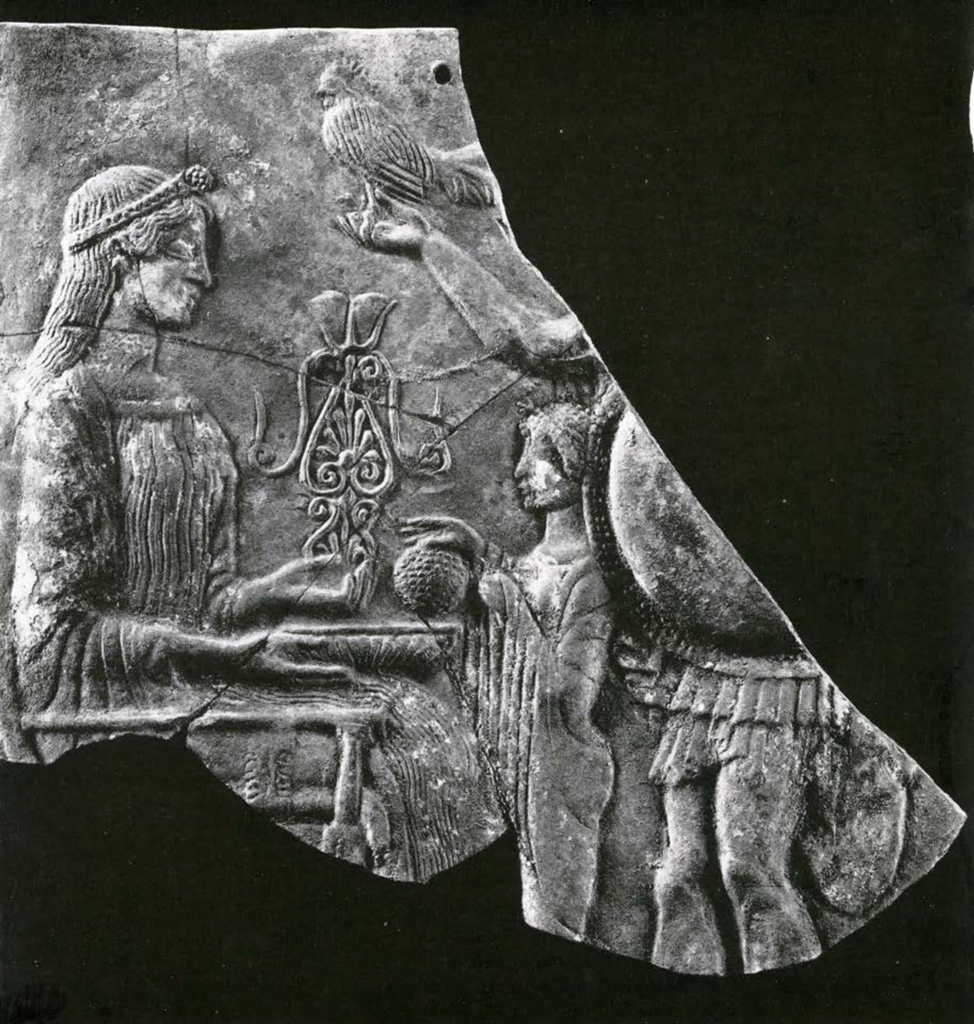
Museum Object Number: 39-26-5
Image Number: 3396

